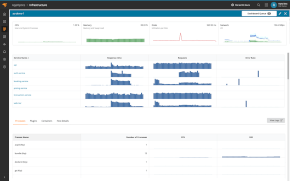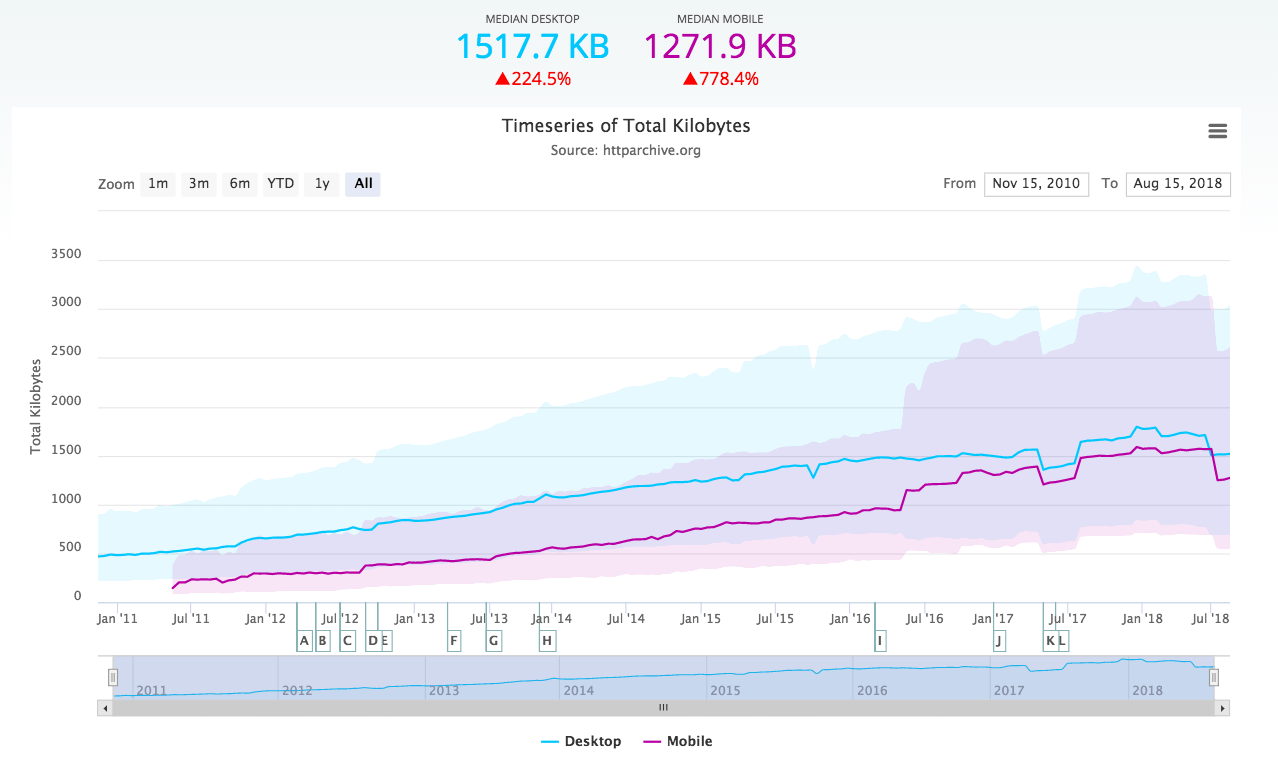If you’re looking for a way to drive conversion rates up and bounce rates down, attract new customers, and make your existing client base more loyal—and who isn’t?—you’ve got to invest in improving the user experience of your apps and services. Since it’s difficult to improve what you don’t measure, you must adopt strategies to analyze how your application behaves, so you can identify and fix issues as quickly as possible and also obtain insights to help you prevent potential problems in the future. Monitoring is the name of the game, and it comes in many shapes and sizes. This post is about a specific type of monitoring: synthetic monitoring.
By the end of the post, you’ll have a more detailed understanding of synthetic monitoring, including the role it can play in an overall monitoring strategy. Let’s dig in.
Defining Synthetic Monitoring
What Is Synthetic Performance Monitoring?
Synthetic performance monitoring—also known simply as synthetic monitoring or even synthetic testing—is a monitoring technique that consists of simulating user interactions with your web application. So, as opposed to other forms of monitoring, synthetic monitoring doesn’t rely on real users interacting with your website. This means with synthetic monitoring, you can have 24/7 monitoring of your website and get alerted right away if any errors, signs of slowness, or downtimes occur—all before your customers can notice. From monitoring availability and performance of individual pages to testing complex transactions across your application, synthetic monitoring keeps your website running as it should. More on that later, though. First, we’ll cover the main benefits of synthetic monitoring.
Synthetic Monitoring and the Main Benefits You Can Get From It
We’ve just defined synthetic monitoring. With the “what” out of the way, we can focus on the “why.” Why is synthetic monitoring more important to businesses than ever before? What can you get from it, whether you’re in IT, digital marketing, or are a business owner? These are the questions we’ll answer now. The first main advantage of synthetic monitoring is … well, being synthetic. That is to say, not relying on real users opens up several opportunities that wouldn’t be possible otherwise. For instance, with synthetic monitoring, you can ensure crucial paths in your application are exercised in testing, in a way that you can’t with monitoring reliant on real users. This way, you can ensure important and complex processes—like logins, cart checkouts, and site registrations—work as intended, which is particularly useful with features or apps that haven’t been released yet.
Additionally, synthetic monitoring allows you to verify the performance of your app from different geographical regions. That way, you can diagnose and fix problems affecting users from that region that wouldn’t have been discovered with other monitoring techniques.
Synthetic monitoring also allows you to verify whether the application is ready to handle an expected traffic increase. Think of the holiday season or Mother’s Day for an e-commerce site. Another example would be the start of the school year for a university’s site. Don’t miss out on sales or create angry users from your site going down during busy times.
Synthetic Monitoring: Going Deeper
Now that we’ve covered the basics of synthetic monitoring, it’s time to start going deeper. We’ll explain how this type of monitoring works in more detail. Then, we’ll list some of the main subtypes of synthetic monitoring. Finally, you’ll see a comparison between synthetic monitoring and real user monitoring.
How Does Synthetic Monitoring Work?
Having covered the “what” and “why” of synthetic monitoring, we’re ready for the “how.” How do you do synthetic monitoring?
As with other types of monitoring, synthetic monitoring is done via a tool or set of tools.
Such tools send automatic calls to your application to simulate interactions that could possibly be made by real users. Issuing the transactions isn’t enough, though. It’s essential the synthetic monitoring tool schedules to run at given intervals, so you can achieve constant monitoring.
However, constant monitoring isn’t of much use if it doesn’t let you know when things go wrong. That’s why synthetic monitoring tools typically offer alerts on various communication channels. SMS and email are definitely the most popular and common channels, but integrations with messaging services—such as Slack—continue to be more widely available as well.
Types of Synthetic Monitoring
Synthetic monitoring can be divided into several subgenres, if you will. You might have tools that cater to only a single type of monitoring. On the other hand, other tools offer advanced or comprehensive monitoring for complete coverage of your website. Here are three genres of synthetic monitoring that play a critical role in monitoring the user experience of your application.
Uptime Monitoring
The most basic type of monitoring is called uptime monitoring. Also known as availability monitoring, this consists of checking whether your website is accessible or not. If your app ever goes down, uptime monitoring can let you know for how long it’s been inaccessible.
It’s essential that uptime monitoring leverages alerts and notifications. That way, the relevant personnel can be alerted and start working on getting the systems back online ASAP.
Page Speed Monitoring
With each passing year, users are getting less and less tolerant of slow pages. Even Google started punishing poorly performing sites on its search results.
Bad performance is a sure way to get your user base to bounce, and that’s why web performance monitoring matters. Synthetic monitoring can help your organization measure page load times, evaluate your CDN’s effectiveness, and even uncover performance issues affecting users from specific geographies.
Transaction Monitoring
Transaction monitoring is the most advanced type of monitoring we’re covering here. It consists of using the synthetic monitoring tool to evaluate whether import business transactions in the application work as expected.
Think of user workflows such as login, logout, user creation, checking out a product, and so on. These are the kind of transactions you can validate using synthetic monitoring tools. That way, you ensure those critical paths are working perfectly even before the real users get to them.
Synthetic Monitoring vs. Real User Monitoring
Finally, let’s discuss some of the main differences between synthetic and real user monitoring (RUM). You have to keep in mind that there’s not a winner to be chosen between both types of end-user monitoring. That would be akin to choosing between integration and unit testing. They’re not interchangeable. Instead, each of them serves different purposes, and that’s why most organizations need both.
The same applies to synthetic and real user monitoring. Both approaches have their distinct benefits.
Synthetic monitoring is a proactive approach, while real user monitoring is a passive one. With synthetic monitoring, you can define the paths to be exercised, whereas RUM requires traffic. Synthetic monitoring allows you to ensure specific critical paths are exercised. On the other hand, RUM tracks real users, and it’s not scripted in any way. Because of that, it can end up discovering fringe problems and edge-case scenarios that weren’t anticipated.
Synthetic Monitoring: A Part of a Larger Picture
Synthetic monitoring is one of the most important and valuable types of application monitoring at your disposal. As you’ve seen, it consists of synthetic—i.e., fabricated—interactions with a website or app. There are many use cases for synthetic monitoring, but many of the most valuable ones are about detecting issues before they reach the end user. So synthetic monitoring is ostensibly a proactive approach to monitoring. That stands in contrast to real user monitoring, which is a passive approach reliant on actual human beings.
Both synthetic and real user monitoring are essential. The two approaches complement one another, each excelling where the other falls short. Along with other techniques like log analyzing and the tracking of metrics, synthetic and real user monitoring are the components of a comprehensive monitoring approach.
Now that you know about synthetic monitoring, the next step for you is to take a look at the available tools. Our suggestion is SolarWinds® Pingdom®. By adopting a tool like Pingdom, you gain access to both synthetic and real user monitoring, allowing your organization to reap the benefits you’ve learned about in this post. Give Pingdom a try today.
This post was written by Carlos Schults. Carlos is a consultant and software engineer with experience in desktop, web, and mobile development. Though his primary language is C#, he has experience with a number of languages and platforms. His main interests include automated testing, version control, and code quality.
























